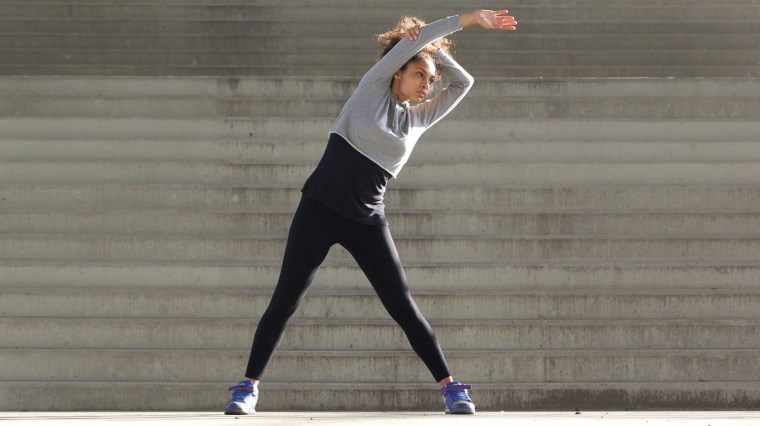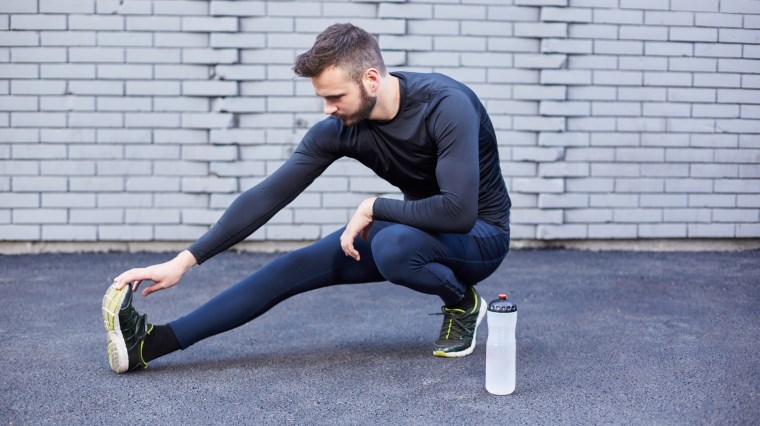How To Improve Your Running Performance

“Your body is the smartest piece of machinery ever invented… it’s not just a collection of bones and muscles. So many different things affect your performance.”
Jacinta Brinsley shares her passion and expertise as an exercise physiologist, yoga teacher, researcher and former national cross-country runner to help you train smart and put your best foot forward.
Combining her biomechanics background and holistic mind-body approach with her real-world experience, Jacinta guides you on how to improve your running performance with her easily approachable tips.
Whether you’re an elite athlete, weekend warrior or returning to running after injury, these practical ‘knowledge nuggets’ will reinvigorate the way you think about your fitness routine and empower you to stay on track of your training.
Catch our summary and Jacinta’s tips below.
Start Small And Progress Slowly

Body tissues need time to adapt
‘Bouncing back’ after any extended break from exercise or trauma to your body is a gradual process of allowing your body to reacclimatise, adapt or even rehabilitate.
To be kind to your body and help you commit to your running for the long-term, it’s important to ensure your fitness progress is sustainable and personalised to your fitness level. If you’re new to running or returning to running after injury, after giving birth or after other life commitments, starting small and progressing gradually is essential – both for your physical and mental health.
Doing too much too soon can lead to injury
Although you want to hit the ground running, increasing intensity too hard or too fast predisposes your body to developing new injury or exacerbating old/recovering injuries.
Just like committing to healthy dietary choices for weight loss, it’s beneficial to let go of an all-or-nothing mindset, accept that progress takes time and compare your progress only to your past self, not to others. Commitment without pressure or unrealistic expectations will help prepare yourself mentally for the road ahead and keep you motivated for the long haul.
Start at a comfortable level
Celebrate every run – and know when we refer to run we’re not talking about marathon distances or all-out sprints – we’re talking about a pace and mileage that you are comfortable with to kick-start your running routine. A 2km jog with intermittent walking for example, may be a good starting point to build upon your fitness, gain confidence in your abilities and create momentum in your exercise program.
Especially for recreational runners, know that your progress is more about the physical effort exerted by your body, rather than the stats you achieve in terms of speed (km/h) or distance if you put yourself on the clock. Some road warriors prefer to occasionally leave their fitness tracker behind for a pressure-free run.
Listening to your body can help guide the pace and distance you set on a given day, rather than focussing on running for a specific length of time, distance or speed. But as we’ll discuss below, there are also many benefits to tracking performance in relation to recovery.
Increase distance or pace gradually
When you’re ready, increasing either pace or mileage will allow you to expand your comfort threshold as your heart, lungs and muscles adapt to a higher intensity of effort, without being strained to the point of overtraining.
Stick to this gradual progression and overtime you’ll naturally be capable of running further, faster or for longer with fewer intermittent walking breaks. Your entire body will be able to work more efficiently - you’ll breathe better on your runs, your heart will be able to tolerate more load or stress and your muscles will feel stronger and capable to take on new challenges.
Listen To Your Body

Biological factors like nutrition, stress, sleep, hormones and gut health can affect your performance
Your body is more than a collection of bones, blood and muscles and more complex than any machine. Numerous biological factors come into play when it comes to the quality of your running – those you can consciously control (e.g. having a balanced diet based your specific dietary requirements, if you have any), those you may be able to influence with healthy lifestyle changes (e.g. sleep duration and quality) and those you can't.
Your hormones, digestive health, immune system, stress levels and sleep quality can all affect your running performance and mood – and the same may apply in reverse.
Although you can’t control all these factors, it’s important to be aware of them, listen to your body and know the difference between when you should push yourself on any given day and when you should pull back.
Modify your training program to make it sustainable
Progress isn’t always linear and that’s OK. No matter whether you’ve hit a wall in your training or unexpected life commitments steer you off track, don’t be afraid to embrace flexibility in your fitness program. To prevent burning out both physically and mentally, it's important to know the value of rest days (planned or unplanned) and when to trade in your regular run for active recovery to ensure your muscles have time to repair and strengthen.
Choose a sustainable fitness program over a strict fitness program. Not only will this adaptability and commitment to recovery help prime your muscles for greater challenges in the long-term, but it’ll ensure your fitness routine works for you and your lifestyle.
Monitor your recovery
Many road warriors enjoy using sports watches and heart rate monitors to track the time, distance and performance stats of their run. Access to this real-time data can help you stay motivated, monitor progress and even to know when to pick up or decrease the pace based on heart rate.
What is often forgotten is that quality recovery is essential for quality performance – but it can be tricky to know just how much recovery time you need to recharge before lacing up for the road.
Fitness trackers like WHOOP help you train smart and track recovery – letting you know your body better from the moment you lace up to your shut-eye at night. They provide objective data 24/7 regarding your heart rate variability (HRV), resting heart rate (RHR) and sleep duration to monitor your health stats and identify your body’s recovery demands based on your daily physical effort.
Don’t push through pain
Listen to your body – both in the bigger picture and in the moment. In the moment, it’s important to know the difference between pain and discomfort. Although none of us enjoy experiencing pain on our runs, pain is a powerful message from our body, a warning flag to stop or lower the intensity or else risk full-blown injury that can put you on the sidelines of your training.
In the bigger picture, symptoms including sleeplessness, irritability, amenorrhea (missed period), weakened immune system, accelerated heart rate at rest and loss of motivation are potentially signs you're overtraining and may mean you need to cut back for a few days.
Even though you want to hit the ground running and commit to your exercise program entirely, it’s important to acknowledge the needs of your mind and body, and accept that recovery is just as significant as training to stay on track of your fitness and improve the quality and longevity of your running.
Get support from healthcare professionals
Whether you’re an everyday athlete or competitive marathoner, it’s important to seek support from health care professionals to provide guidance in your training and treatment for soreness, aches and injury.
You can contact our Sportitude shoe experts to help you get fitted with the right running shoes and reach out to your physiotherapist, chiropractor and exercise physiologist to take care of your body at all stages of your running and fitness journey.
Balanced Exercise ‘Diet’

Make your body move in unfamiliar ways
As a runner, you may not stray far beyond your go-to exercise of putting foot to pavement to get active and work up a sweat. However, working out your muscles in different ways has numerous benefits that can be applied back into your running performance while improving your overall health.
Even trading in the road for different surfaces by beach or trail running diversifies your routine and applies your body in new ways – changing the load on your joints, improving balance, stability and strength.
Perform activities that promote active recovery
Although a weekly appointment with your massage therapist or a self-massage with massage and recovery tools like foam rollers can relieve muscle tension, improve flexibility of joints and keep your body feeling fresh and energised, it’s important to not overlook the benefits of active recovery.
Keeping your body moving with low-intensity exercise boosts your blood circulation. By promoting the delivery of oxygen-rich blood to your recovering muscles, you’re helping supply your muscles with the nutrients needed for repair.
Low-impact cardio like short or easy-going hiking, walking, light jogging, swimming or cycling on ‘rest days’ can improve blood flow while giving your joints a break from the high-impact stress of running. Being lower impact, these active recovery activities reduce the risk of developing repetitive stress or overuse injuries compared to a run-only workout routine while improving your endurance and cardio fitness.
Mobility, stability and strength
Mobility, stability and strength are the three pillars or “muti-vitamins” of exercise. The benefits of cross-training can't be emphasised enough when it comes to not only your overall health but your running performance.
Mobility exercises like a rejuvenating yoga workout and Pilates, stability and balance exercises like squats, lunges and planks, and strength exercises like dumbbell workouts, kettlebell workouts and other forms of resistance training all make you a better runner and allow your muscles to perform more efficiently.
With greater flexibility, core stability and strength, your muscles are less prone to injury during high-impact workouts like running. Together, this fitness trifecta ensures a balanced exercise ‘diet’ to benefit your entire body - allowing you to move more and move better to achieve your health and fitness goals.
Subscribe to our YouTube channel so you never miss out on the latest RunTV episodes, shoe reviews and other practicals tips for runners. Happy running!
